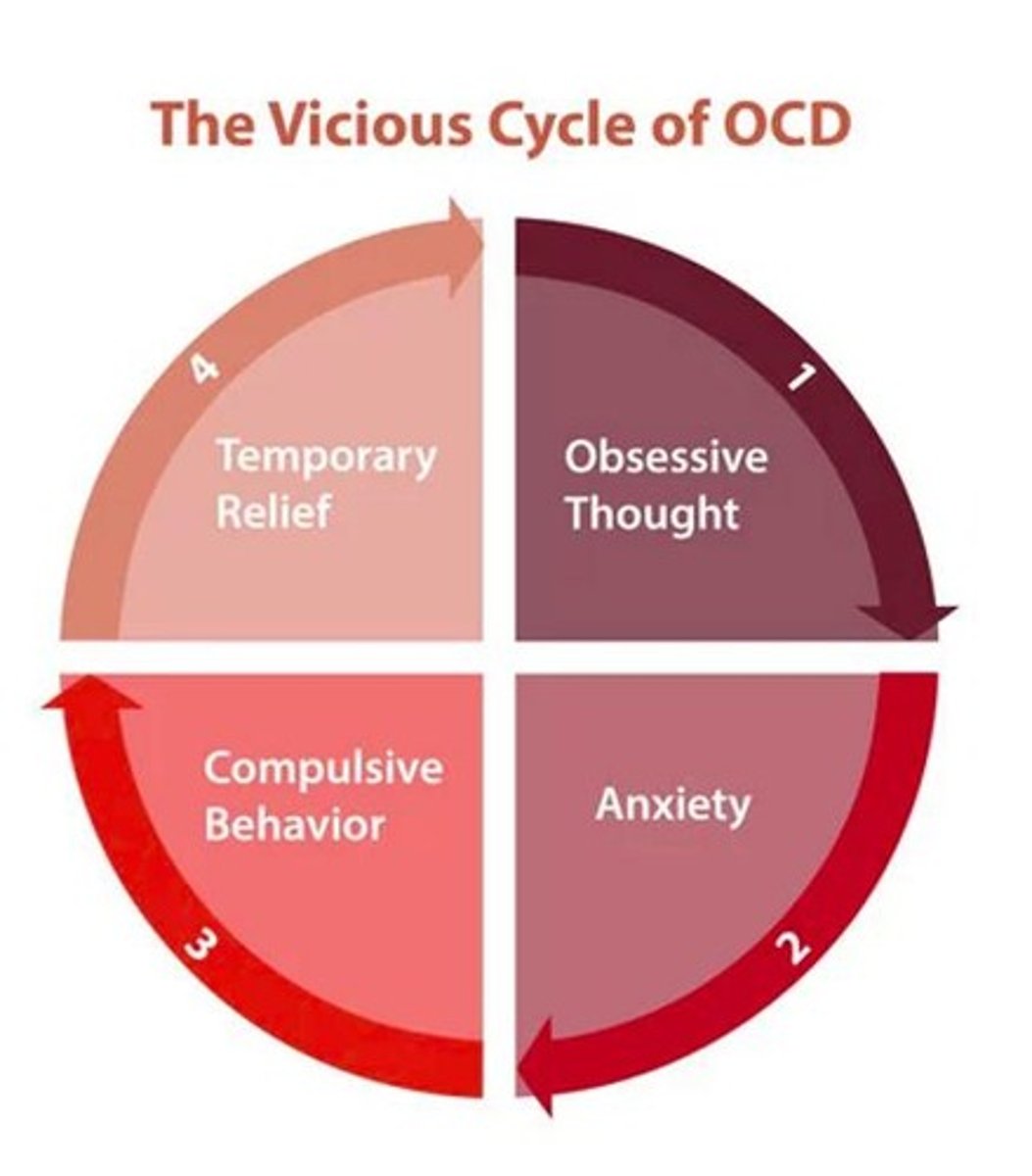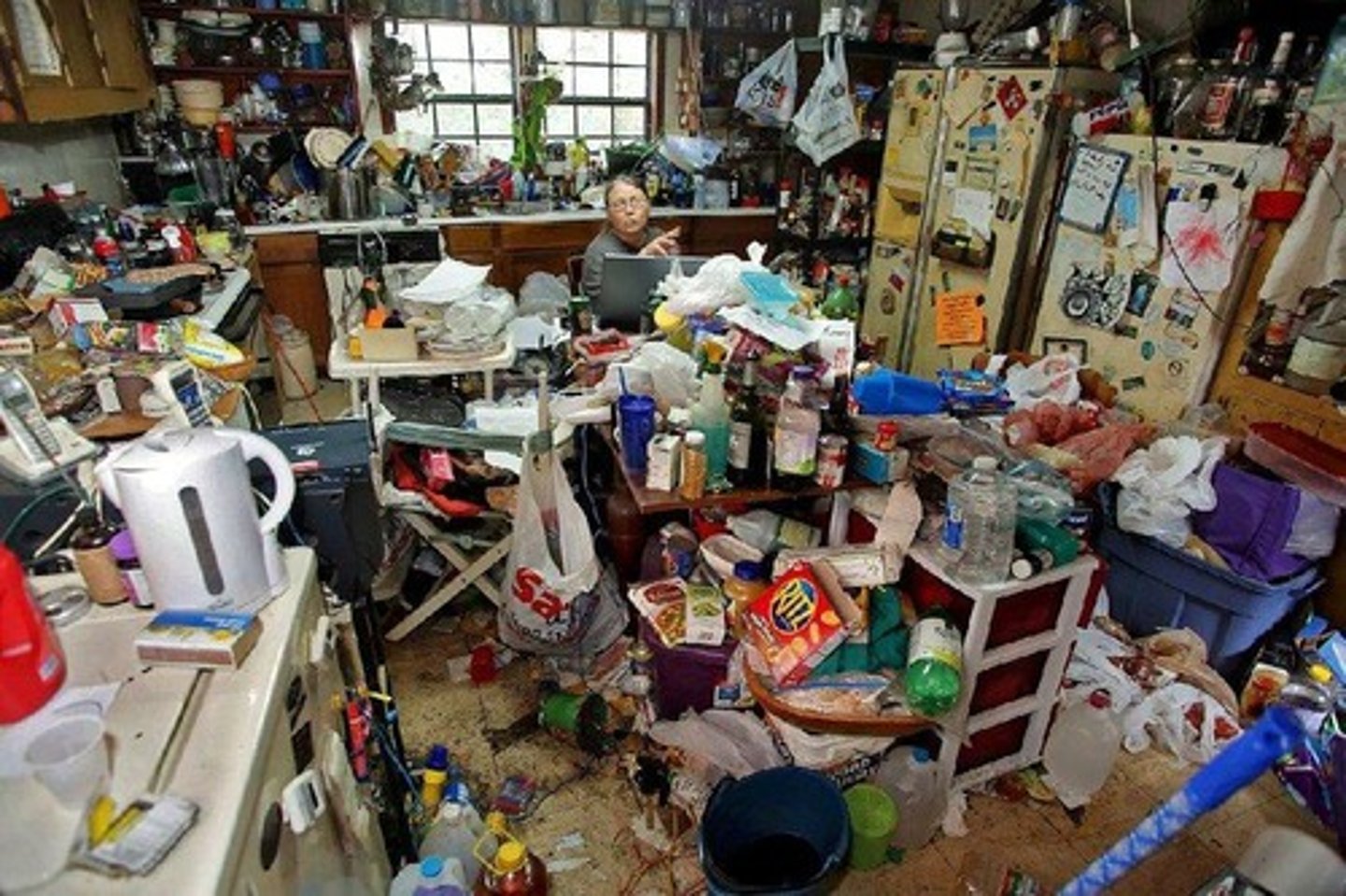Understanding Obsessive-Compulsive Disorders and Treatments
1/23
There's no tags or description
Looks like no tags are added yet.
Name | Mastery | Learn | Test | Matching | Spaced |
|---|
No study sessions yet.
24 Terms
Obsessive-Compulsive Disorder (OCD)
Mental disorder with obsessions and compulsions.
Obsessions
Intrusive, unwanted thoughts causing anxiety.
Compulsions
Repetitive behaviors providing temporary relief.
Vicious Cycle of OCD
Obsessions lead to compulsions, reinforcing anxiety.

Insight in OCD
Awareness of beliefs' irrationality affecting prognosis.
Body Dysmorphic Disorder
Preoccupation with perceived body flaws and grooming.
Muscle Dysmorphia
Subtype of body dysmorphic disorder in men.
Hoarding Disorder
Difficulty discarding items, causing clutter and distress.
Trichotillomania
Compulsive hair-pulling resulting in hair loss.
Excoriation Disorder
Skin picking leading to injury and distress.
Yale-Brown Obsessive Compulsive Scale (Y-BOCS)
Screening tool for assessing OCD severity.
Exposure and Response Prevention
Gold standard therapy for treating OCD.
Cognitive Behavioral Therapy (CBT)
Targets unwanted thoughts in OCD treatment.
Psychoeducation
Educating patients about their disorder and treatment.
Anxiety Medications
SSRIs are most effective for OCD treatment.
Habit Reversal Training (HRT)
CBT method for body-focused repetitive behaviors.
Awareness Training
Recognizing urges to manage compulsive behaviors.
Competing Response Development
Creating alternative behaviors to replace compulsions.
Generalization of Skills
Applying learned skills to various situations.
Dysfunctional Beliefs
Irrational thoughts contributing to OCD symptoms.

Safety Checks
Repetitive checking behaviors to alleviate anxiety.
Temporary Relief
Short-term anxiety reduction through compulsive actions.
Intrusive Thoughts
Unwanted thoughts causing significant distress.
Clutter Compromise
Hoarding leads to unusable living spaces.
